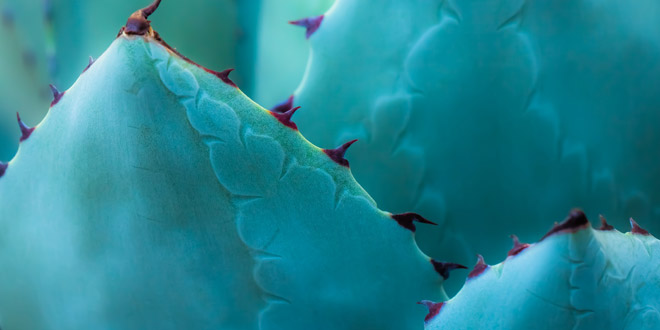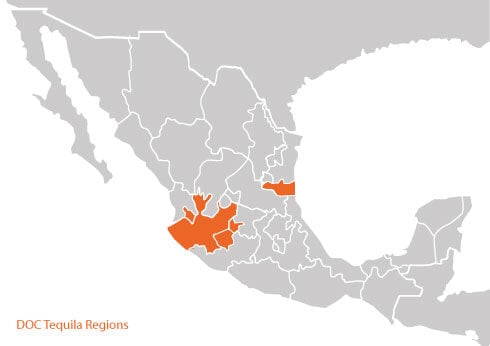
Tequila
Everyone is familiar with Tequila, but the quality and range of flavours it represents is often underestimated. Styles vary greatly from producer-to-producer and region-to-region, each one offering a specific combination of fruity, spicy and herbal characteristics derived from the heart of the agave.
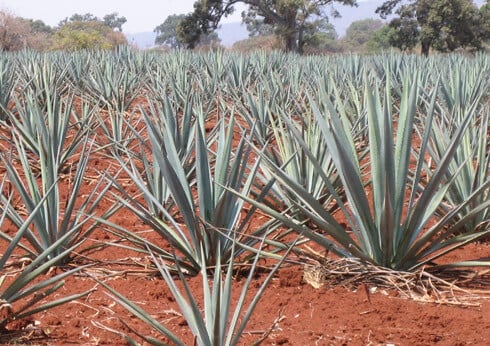 Tequila is made from the agave plant; blue agave is the superior variety
Tequila is made from the agave plant; blue agave is the superior variety
The sacred agave
The blue agave has been a part of life in Mesoamerica for millennia. To the Aztec people, the spiky succulent was food, medicine and sacrament. They wove the fibres from its leaves, burned its husks for fuel, and extracted the liquid from its core to make a wine called pulque. Mayahuel, the goddess of the agave, was directly associated with the transformation of the agave’s sweet sap into alcohol.
When Spanish conquistadors arrived in the early-16th century they carried with them copper alembics from the old world, which – having exhausted their supplies of brandy – they turned to distilling the native pulque. The first vino de mezcal, as these early spirits were known, were enjoyed throughout the region centuries before the founding of the modern state of Mexico.
How is Tequila made?
All tequila begins with a field of blue agaves and a team of skilled farmers known as Jimadors. When the plants are mature and ready to flower they are filled with the sweet fermentable sugars needed to make alcohol. Working with specialised tools, the Jimadors cut the agaves from their roots and strip them of their leaves to expose the piña at the centre – so called because it resembles a pineapple.
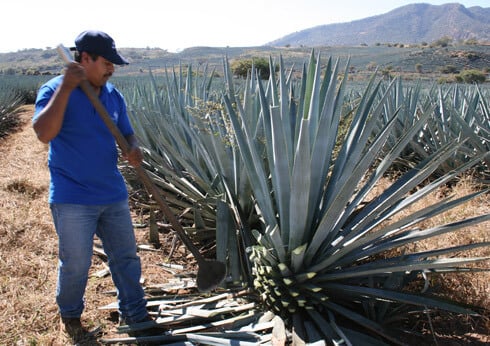 The agave plants are harvested by jimadors; only the heart of the agave is used in Tequila production
The agave plants are harvested by jimadors; only the heart of the agave is used in Tequila production
The piñas are then cooked to develop the sugars inside and make them more easily fermentable. Traditionally this is done in an oven called a ‘horno’ though modern steam cookers are also used.
The cooked piñas are then crushed to extract the sweet juice within. Crushing is done either with a mechanical press or a tahona – a stone wheel, some of which are still turned by donkeys. This juice is then left to ferment. Yeasts convert its sugars into alcohol and produce many of the flavour compounds that will make up the character of the finished Tequila.
Once fermentation is complete, a process that can take anything from several days to more than a week, the agave juice now somewhat resembles the pulque drunk in the region thousands of years ago. The alcoholic liquid is then distilled to produce spirit. Traditionally, this means double distillation in copper pot stills – a similar process to single malt whisky. However stainless steel pot stills and industrial column stills are also permitted.
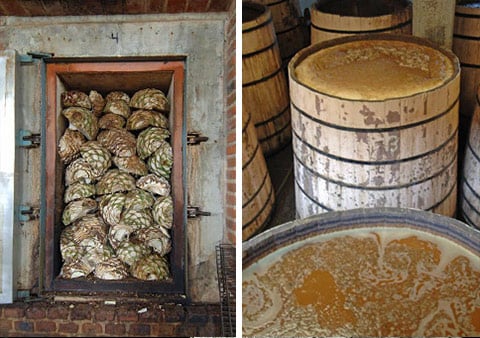 The agave hearts, or piñas, are cooked and crushed to extract their juice
The agave hearts, or piñas, are cooked and crushed to extract their juice
Most Tequila will be rested in inert containers for a short time prior to bottling though some will be aged in oak casks to create additional layers of flavour and aroma. From the agave, to the fermentation vat, to the still – producers make decisions that shape their creations. The complex production process gives rise to a diverse range of styles and ensures that no two Tequilas are exactly alike.
Puro or mixto?
Tequila labelled ‘puro’ is made exclusively from blue agave – most high-end bottlings will be produced this way. Mixto, on the other hand, is made by adding other sugars to the crushed agave juice prior to fermentation. Mixto Tequila, which must contain at least 51% agave, is cheaper to make and often shows a more subdued agave character.
It is also permitted to add flavouring and colouring to Tequila, providing these additions don’t exceed 1% of the total volume. However, many producers proudly omit such ingredients, preferring to let the character of the raw materials shine.
The Tequila regions
Agave spirits, known broadly as Mezcal, are traditional across Mexico. Tequila is a recognised appellation – just like Champagne – which encompasses all of Jalisco and areas in the states of Michoacán, Nayarit, Guanajuato and Tamaulipas for production. These areas fall within the fertile soils of the Trans-Mexican Volcanic Belt that stretches from the Gulf of Mexico to the Pacific Ocean.
The regions offer specific conditions that influence the agave, just as a particular terroir will affect grapes used in winemaking. As a result, the origin of a Tequila will have a significant impact on the way it tastes. The famed Tequila Valley northwest of Guadalajara offers nutrient rich soils and high temperatures that produce spirits known for their earthy, spicy and herbal flavours. By contrast, Tequila derived from the cooler highlands of Los Altos is known for a softer, more fruit-forward profile.
Aged or un-aged
For most of its history, Tequila was a clear spirit. But in the 20th century, oak-aged expressions began to leave Mexico, hoping to appeal to whisky and brandy drinkers. The climate in Jalisco – being significantly hotter than Speyside or Cognac – means that aging happens fast. Spirits turn golden and take on new flavours in just a few months.
Blanco
Sometimes referred to as silver Tequila this is the purest form of the spirit, typically bottled un-aged and full of fresh agave flavour. For many aficionados, this is Tequila at its best. Don Julio Blanco is a great example of the style, with tropical fruit on the nose and mint and pineapple on the finish.
Reposado
Cask-aging softens Tequila and imparts oak flavours of vanilla and spice. Tequila aged more than sixty days but less than a year is classified as reposado. Patron Reposado is aged in ex-bourbon barrels, layering the fresh agave spirit with notes of vanilla and American oak spice.
Añejo
After one year of aging, Tequila will emerge darker and softer than before. The grassy notes of fresh agave will be subdued, superseded by mature flavours of oak spice and dried fruit. The iconic Don Julio 1942 Tequila spends at least two-and-a-half years in re-charred Bourbon barrels, leaving it rich and honeyed with intense aromas of white chocolate and candied fruit.
Extra Añejo
This category was introduced in 2006 to classify Tequila aged more than three years. These dark, complex spirits are increasingly popular with connoisseurs looking for luxury spirits. Clase Azul is well known for its long-aged expressions which often employ combinations of different casks. Just 100 ceramic decanters of Clase Azul Tequila Ultra-Extra Añejo are released each year.
Other classifications
Not all Tequila falls into the four classifications given here and some can be a little more difficult to identify at first. oro or golden Tequila is often un-aged and derives its appearance from added colouring. Cristalino Tequila is made by re-distilling, or more commonly charcoal filtering, aged Tequila to remove its colour. Curado refers to Tequila with added flavourings and sweeteners.
How to drink Tequila
Far from shots and slammers, good Tequila benefits enormously from a tulip-shaped tasting glass and some time to nose and appreciate. It’s also increasingly popular to enjoy Tequila with ice or served long with ice and soda, similar to a whisky highball.
While Tequila bottles with worms floating inside may be an enduring image, it’s something of a myth. While there are Mezcals that contain a moth larvae called gusano de maguey, they’re mostly for tourists.
Tequila also takes centre stage in iconic drinks like the Margarita and the Paloma, as well as modern classics like the Añejo Old Fashioned. This updated version of the original cocktail showcases the complexity of aged Tequila in an easy-drinking way. To make one at home combine 50ml Casamigos Añejo Tequila with two dashes of Angostura Bitters and a teaspoon-or-two of agave syrup in a rocks glass. Add plent of ice and stir to chill and combine, then top up with more ice and garnish with a twist of orange peel.
Click here to learn how to make the perfect Margarita.
Did you know?
- the blue agave plant is not a cactus, despite its spiky appearance. it is actually a succulent, more closely related to the yucca and the lily.
- according to generic organisation Consejo Regulador del Tequila, there were 150 distilleries making Tequila in 2013, and no fewer than 1,377 registered brands
- roughly 85% of all Tequila is consumed in Mexico and the United States, with the latter accounting for 75% of export sales
- The blue agave is pollinated by the Mexican Long-Nosed bat. Without this winged mammal’s insatiable desire for nectar, we would have no Tequila.
- In June 2017, actor George Clooney sold the Casamigos Tequila brand to drinks giant Diageo for $1 billion, inspiring a whole generation of celebrity endorsed Tequila.
- Agaves can take up to 10 years to fully mature. They must be harvested when they are full of concentrated sugars, right before they flower.
Typical Character and Style of Tequila
-
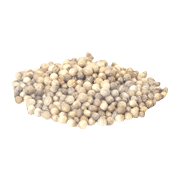 White Pepper
White Pepper
-
 Grass
Grass
-
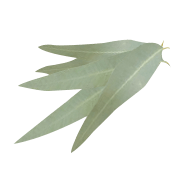 Eucalyptus
Eucalyptus
-
 Earth
Earth
-
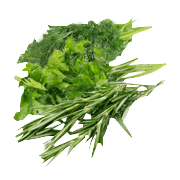 Mixed Herb
Mixed Herb
-
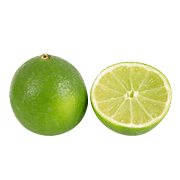 Lime
Lime


